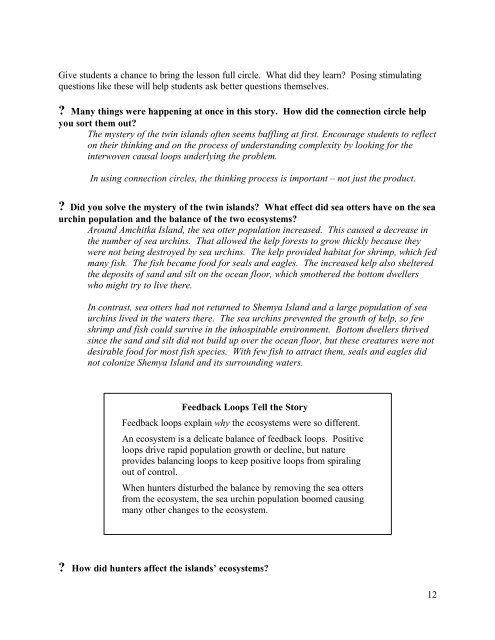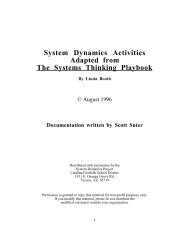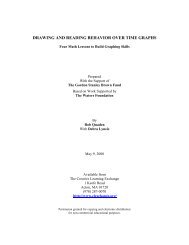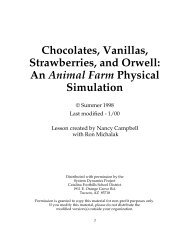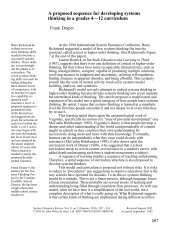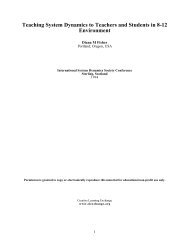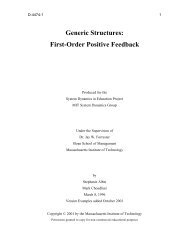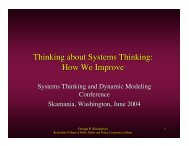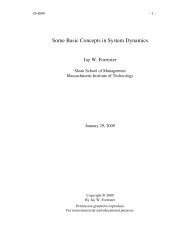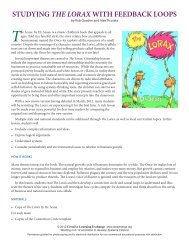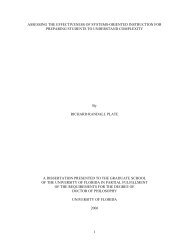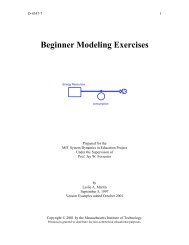Keystone Species in an Ecosystem Using Connection Circles to Tell ...
Keystone Species in an Ecosystem Using Connection Circles to Tell ...
Keystone Species in an Ecosystem Using Connection Circles to Tell ...
Create successful ePaper yourself
Turn your PDF publications into a flip-book with our unique Google optimized e-Paper software.
Give students a ch<strong>an</strong>ce <strong>to</strong> br<strong>in</strong>g the lesson full circle. What did they learn? Pos<strong>in</strong>g stimulat<strong>in</strong>gquestions like these will help students ask better questions themselves.? M<strong>an</strong>y th<strong>in</strong>gs were happen<strong>in</strong>g at once <strong>in</strong> this s<strong>to</strong>ry. How did the connection circle helpyou sort them out?The mystery of the tw<strong>in</strong> isl<strong>an</strong>ds often seems baffl<strong>in</strong>g at first. Encourage students <strong>to</strong> reflec<strong>to</strong>n their th<strong>in</strong>k<strong>in</strong>g <strong>an</strong>d on the process of underst<strong>an</strong>d<strong>in</strong>g complexity by look<strong>in</strong>g for the<strong>in</strong>terwoven causal loops underly<strong>in</strong>g the problem.In us<strong>in</strong>g connection circles, the th<strong>in</strong>k<strong>in</strong>g process is import<strong>an</strong>t – not just the product.? Did you solve the mystery of the tw<strong>in</strong> isl<strong>an</strong>ds? What effect did sea otters have on the seaurch<strong>in</strong> population <strong>an</strong>d the bal<strong>an</strong>ce of the two ecosystems?Around Amchitka Isl<strong>an</strong>d, the sea otter population <strong>in</strong>creased. This caused a decrease <strong>in</strong>the number of sea urch<strong>in</strong>s. That allowed the kelp forests <strong>to</strong> grow thickly because theywere not be<strong>in</strong>g destroyed by sea urch<strong>in</strong>s. The kelp provided habitat for shrimp, which fedm<strong>an</strong>y fish. The fish became food for seals <strong>an</strong>d eagles. The <strong>in</strong>creased kelp also shelteredthe deposits of s<strong>an</strong>d <strong>an</strong>d silt on the oce<strong>an</strong> floor, which smothered the bot<strong>to</strong>m dwellerswho might try <strong>to</strong> live there.In contrast, sea otters had not returned <strong>to</strong> Shemya Isl<strong>an</strong>d <strong>an</strong>d a large population of seaurch<strong>in</strong>s lived <strong>in</strong> the waters there. The sea urch<strong>in</strong>s prevented the growth of kelp, so fewshrimp <strong>an</strong>d fish could survive <strong>in</strong> the <strong>in</strong>hospitable environment. Bot<strong>to</strong>m dwellers thriveds<strong>in</strong>ce the s<strong>an</strong>d <strong>an</strong>d silt did not build up over the oce<strong>an</strong> floor, but these creatures were notdesirable food for most fish species. With few fish <strong>to</strong> attract them, seals <strong>an</strong>d eagles didnot colonize Shemya Isl<strong>an</strong>d <strong>an</strong>d its surround<strong>in</strong>g waters.Feedback Loops <strong>Tell</strong> the S<strong>to</strong>ryFeedback loops expla<strong>in</strong> why the ecosystems were so different.An ecosystem is a delicate bal<strong>an</strong>ce of feedback loops. Positiveloops drive rapid population growth or decl<strong>in</strong>e, but natureprovides bal<strong>an</strong>c<strong>in</strong>g loops <strong>to</strong> keep positive loops from spiral<strong>in</strong>gout of control.When hunters disturbed the bal<strong>an</strong>ce by remov<strong>in</strong>g the sea ottersfrom the ecosystem, the sea urch<strong>in</strong> population boomed caus<strong>in</strong>gm<strong>an</strong>y other ch<strong>an</strong>ges <strong>to</strong> the ecosystem.? How did hunters affect the isl<strong>an</strong>ds’ ecosystems?12


